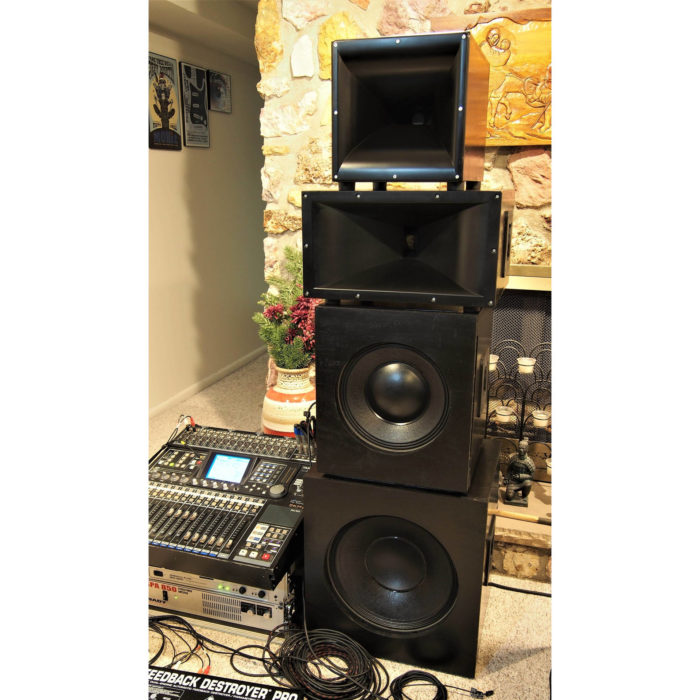Playing music over a system that’s been tuned as flat as possible is very illuminating.
Please Remember:
The opinions expressed are mine only. These opinions do not necessarily reflect anybody else’s opinions. I do not own, operate, manage, or represent any band, venue, or company that I talk about, unless explicitly noted.

 Want to use this image for something else? Great! Click it for the link to a high-res or resolution-independent version.
Want to use this image for something else? Great! Click it for the link to a high-res or resolution-independent version.I now have El Ridiculoso all finished and set up at home. Mario put this gorgeous coat of epoxy paint on the boxes, lending them a lightly textured and glossy blackness that I love. After getting all the individual enclosures hooked up, I tuned the system to be as flat as I could get it. (El Ridiculoso’s final form is pretty darn linear from about 40 Hz to 15 kHz, with a good amount of usable information beyond even that.) With my tuning in place, I started doing some listening.
I’ll start off by saying this. Music played over a flat-as-you-can-get-it system is music examined under an electron microscope. It’s an image with the sharpness dialed all the way up. There is no escape from anything, no glossing over of this or that. It’s a sonic reality that plants itself an inch from your face, and then starts waving madly. Music with a lot of “traffic” – a lot happening at once – can almost be an overloading experience for your brain.
If it’s there, you WILL hear it.
You might be surprised at what isn’t there, by the way.
You might expect, for instance, that a modern, “rock-mix” of a band like Rush would have a lot of thundering bottom end. That’s not really the case. Even some pop-dubstep really isn’t that heavy “down there.” Overwhelming LF isn’t what makes the mixes work; What the mix stands or falls on is the absolutely crucial midrange. If you get, say, 250 Hz – 5 kHz wrong, you may as well forget about everything else.
…and that reality feeds into points I’ve been making about live audio for quite a while. It feeds into points that other people have been making for ages: The low end does matter, yes, but not as much as you think it does. Balancing the bottom to the rest of the audio makes for the best overall experience, but the first priority is to get the mids to be musical. There’s no substitute for that, and trying to cover up a debacle in the midrange space with a lot of *BOOM* just makes for annoyance. Real punch is the interplay between LF thud and higher-frequency definition. Clarity is a real thing that you really need, and scooping a mix hollow KILLS clarity.
Maybe a bigger subwoofer pile isn’t what you need. Maybe some more time sorting out the firestorm of aural data that lives above the bass range is time better spent.